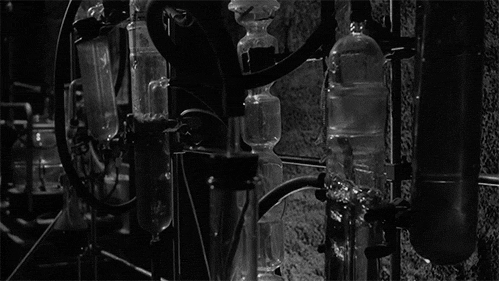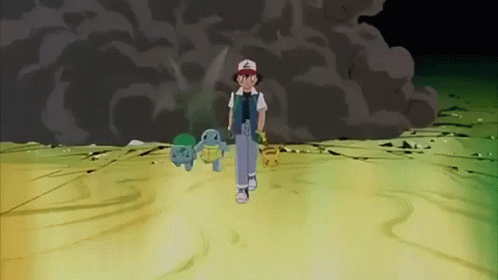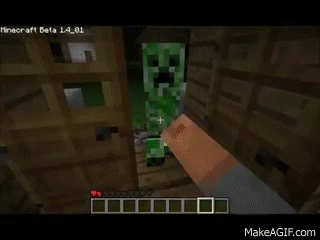Welcome back once again, 1879 fans. Today we’re going to be wrapping up our look at the primary Weird Scientist schools with the last on our list, the Prometheans. This group is something of a doozy to cover, so fire up the Bunsen burners, flip on the Tesla coil, and get ready to possibly take that step just a little too far as we dive on in.

So given that the Herons build gadgets and the Newtonians specialize in potions, what do the Prometheans do? In simple terms, they are biologists, but ones who are not afraid to push things into the boundaries of the unsettling or immoral in their pursuit of knowledge, specifically in how to create and manipulate life. Many of them are enamored with the Samsut and their ability to raise the dead for their armies, and some take this to the point of being double agents, connecting with the Samsut to get hold of some parts of their knowledge in exchange for sharing any insights they might be able to glean from it, while simultaneously taking funding from the Crown with orders to help find a way to undermine the threat the Samsut pose. It’s a tenuous position, and as with any sort of double agent, is hard to tell where their actual loyalties lie.
The larger part of British society, of course, completely shuns the vast majority of the Prometheans’ work. The Anglican Church and most other religions consider the creation of life to have been a divine event, and thus trying to replicate it trods on territory that should be beyond the reach of mortals. This of course is a large part of why the war against the Samsut is wholly justified in their minds. Some are willing to suffer what they consider to be the lesser of two evils in order to understand enough to vanquish the greater threat, but many would just as soon shoot a Promethean as look at them. The Samsut, on the other hand, have no prejudices against their work, and in fact revel in it. It makes for a tempting offer for many Prometheans to defect, though whether or not any have successfully is highly classified.
Promethean characters are likely going to be shunned by society if their Professions are known, possibly even actively sought out by the zealous intending to execute them for their perceived crimes. Getting in good with an adventuring group would be a major boon for a Promethean, either as an NPC or as a player, in case they need assistance to make a quick get away. They’ll also need creatures and creature parts to use for their creations, and adventuring groups tend to run afoul of a variety of exotic critters quite commonly in their careers, so it’s a win for both parties (at least as far as the Promethean is concerned). NPC Prometheans would commonly send groups out to obtain creatures or creature parts, though they’ll usually want them as fresh as possible, which if it’s a distance away would likely require bringing back a live specimen. If your players are finding their adventures trekking across the globe to be too easy, try adding some difficulty by having them find a way to corral and care for some sort of creature at the same time.

A player choosing to play a Promethean would likely be motivated by a desire to stay on the move to avoid persecution, to get to new locations to study new forms of life, and if possible to get to the Gruv and try to get hold of some of the Samsut’s knowledge, or possibly even some Annuinaki artifacts of their own. Actually having the Promethean along with the group means not only could they provide biologically based items to assist in adventures (such as the living armor suits described on page 314 of the 1879 Player’s Companion), but they can actually employ creatures that they have modified and trained to fulfill tasks for them, and by extension, the group. If the idea of employing a group of creatures with supernatural powers to get stuff done appeals to you, this is your Profession.

Prometheans get the Craftsman (Biology) Skill as their Professional Skill, which is set up as sort of a catch-all for the sort of supernatural surgical processes that would be involved in actually creating and modifying their creatures. The Skill does not differentiate between plants, animals, fungi, single-celled organisms, or any other divisions one might come up with. It’s assumed that they will study all of these aspects equally as they advance (and indeed, may actually end up blurring those boundaries with some of their creations). Though not a hard requirement, a GM would be encouraged to have a player diversify their studies in-character to represent this (alternatively, one could house rule a need to pick a specialization and have multiple Skills to cover each, though this would eat up more Skill slots and require more bookkeeping). The actual mechanics involved for using the Skill are going to be highly subjective depending on the circumstances. There will need to be some sort of base organism that the Promethean is working with; this can be an animal, plant, fungus, anything organic. Multiple organisms can be involved, but one will need to be chosen as the base, usually the largest of them or, if they’re relatively equal in size, the one that is intended to have the most agency with the final creation. Use the Steps for the base creature’s statistics for determining target numbers, selecting whichever are the most appropriate for the desired change, taking into account both attributes and existing abilities. Multiple uses of the Skill may need to be employed to achieve the desired results, and requiring additional Successes to grant new abilities would be encouraged.
For example, say a Promethean was working on an eagle (stats on page 356 of the 1879 Game Master’s Guide), intending to train it as a scout for them and enhance its abilities in that regard. They would likely want to enhance its speed, so that it can get into and out of situations quicker, expand its effective range in a given time period, and have it return with reports as quickly as possible. This would be best addressed by making a Craftsman (Biology) test against the eagle’s Dexterity Step of 5, with each success giving a +1 to its flying movement rate. They might also want to enhance its hearing, so that it could provide audio as well as visual information. In this case, they would make their Craftsman (Biology) test against the eagle’s Perception Step of 6, giving the eagle the Enhanced Senses (Hearing) ability with a Rank equal to the number of Successes achieved. Finally, they might want to give the eagle Heat Sight in addition to its normal vision, so that it could detect heat signatures and provide reports at night. Since the eagle already has the Enhanced Senses (Sight) ability affecting its vision, they would need to make their test against its Step, and should require an additional success since Heat Sight would be a new ability. In addition to these tests, the Promethean may require other body parts or other materials to make the changes, such as the corneas of a creature with Heat Sight.
Not all creations necessarily need to be treated as an independent creature. Prometheans might also just use parts from a creature to create or enhance a device, giving it a biological component but not enough sentience to be treated as its own entity (at least from a mechanics stand point). As mentioned above, the living armor examples from the Player’s Companion are a good example, but could also involve something like an enormous pair of bird wings that temporarily graft onto a person to grant them flight, a thrown weapon like a grenade that contains something like termites modified to eat metal instead of wood to destroy a vehicle or opponent’s armor. They also might enhance an existing item, such as incorporating living skin from an electric eel into a leather bullwhip in order to give it a shock effect, or modify a pen to incorporate a squid’s ink sac so that it continually supplies itself with ink. Though these creations are still alive and will need to be sustained and cared for somehow in order to function (which could be done through several different means depending on the nature of the creation), they don’t have enough autonomy to be mechanically treated as a creature.
For enchanting methods other than simply using the Craftsman (Biology) Skill, Prometheans could very easily use their spells to enhance a device or creature. They will mostly focus on buff spells to improve their creations’ stats or give them new abilities. As a result, they’ll usually be very straight forward with their spell techniques, either casting the spell direct for a temporary boost or Naming it onto the creature for a permanent effect (and just as you would if a Named spell were cast directly onto a player character, do fully play out any and all effects of having a spell permanently cast on a creature). They might do a one-time use casting on a device if it fits within its intended use and has an obvious point where the spell would be activated, but keep the targeting in mind here. Since Prometheans are working with living creatures, even ones that are treated as devices, the target of the spell would often be the device itself rather than the character the device is targeting, so bear this in mind during creation. Examples might include:
- Casting Plant Growth on a moss contained in a thrown container so that, once it’s exposed to air, the spell activates and the moss grows rapidly to engulf the target
- Creating a creature that can be thrown and grapple a target, and casting Levitate to activate once the target has been bound, so that they will both float up until the duration expires and suffer falling damage.
- Creating a creature to guard a labyrinth, designed to find a living target, pursue it relentlessly, and explode upon contact, and casting Pass Through Barrier to activate once a target has been spotted so that it’s not obstructed by the maze.

True Elements would be extremely tricky to successfully weave into a living target, but if successful could produce some powerful results. Enhancing fighting abilities is fairly obvious, but some other examples might include:
- Weaving True Fire into fireflies so they could actually ignite what they touching
- Weaving True Earth with a burrowing creature like a mole or rabbit to help enhance its digging capabilities
- Weaving True Water into an amphibious creature like a frog, so that it could remain in dry environments without suffering detriment
- Combining True Wood with a fungus or moss that would bond to a target it’s placed upon, to create a wooden plate that could be attached on the fly as additional armor plating
- Adding True Air to a flying creature to make it lighter and allow it to fly longer and faster
Just as life itself is diverse and pervasive, so too are the possibilities for the creations of the Promethean. There is a certain amount of ‘ick’ factor in dealing with organic creations, both from a moral standpoint and from an actual physical standpoint of dealing with metabolic processes, but if you can get past that like the Prometheans can, then there’s an entirely new world of opportunities – and pitfalls – for you to explore. It’s just a matter of taking control of it and showing the world what it can do.

What sort of creatures can you think of for a Promethean to create? How do you think the Profession might make use of some of the things found in the Gruv? Can you guess at all the pop culture references I could have made in this post but had to skip over so it wouldn’t go on forever? Let us know on Discord, and we’ll see you again next week!
